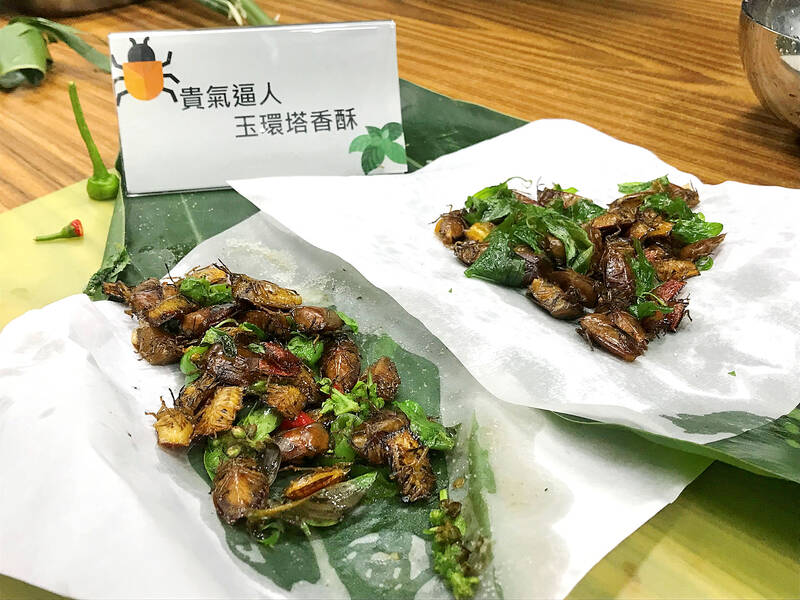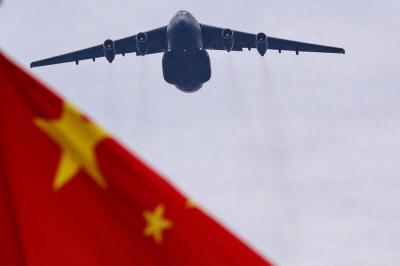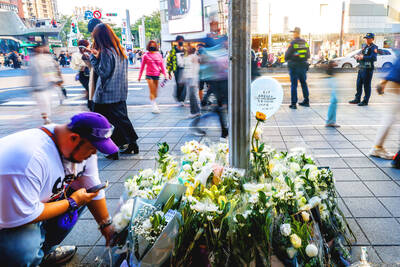The consumption of edible insects in Taiwan has barely crawled forward because of overly restrictive regulations and the “ew” factor, but several people are trying to change that.
Having dined on the likes of tree bugs served by people who dwell in the mountains of South America 1,600m above sea level and more sophisticated dishes prepared in Japan, travel program host and writer Huang Shih-chieh (黃仕傑) has promoted the consumption of bugs through several of his books chronicling his adventures.
Others pushing for edible insects include Yang Ping-shih (楊平世), a National Taiwan University (NTU) Department of Entomology professor emeritus, and Chen Young-fa (陳陽發), a research assistant who specializes in insects at the Experimental Forest under NTU’s College of Bio-Resources and Agriculture.

Photos courtesy of Forestry and Natural Conservation Agency’s Chiayi branch
In 2015, the two published an article listing the benefits of eating insects in Nature Conservation Quarterly, a Chinese-language journal issued by the Taiwan Biodiversity Research Institute.
Chen said that early farming communities in Taiwan and some of the indigenous peoples have a long history of catching and consuming bugs, which means eating insects would have the virtue of preserving not only the environment but also local culture.
However, Taiwan continues to lag far behind in the field.
One barrier is government policies that both limit and discourage progress, including only having four species on its list of edible bugs, compared with the 1,900 types identified and logged by the UN Food and Agriculture Organization across the globe, local experts said.
The Food and Drug Administration only allows red wiggler earthworms (Eisenia andrei), weaver ants (Polyrhachis vicina Roger), bee pupae and silkworm chrysalises to be consumed or sold for edible purposes.
Sellers of any other species not on the list without proper government approval would contravene the Act Governing Food Safety and Sanitation (食品安全衛生管理法) and be subject to a fine of up to NT$200 million (US$6.11 million).
Ironically, it was a government agency, the Chiayi Forest District Office of the Ministry of Agriculture’s Forestry and Nature Conservation Agency, that almost got nabbed under the law in April.
The office decided that one way to combat the growing population in Taiwan of the lychee giant stink bug (Tessaratoma papillosa), a foreign invasive species, is to eat them, and it planned to present the insect in a stir-fried dish on April 27.
However, local residents and government officials expressed concern over the idea, and the office later said that a frying demonstration was made, but participants were told not to eat them.
Chen Bing-chen (陳秉辰), a graduate of the National Yunlin University of Science and Technology’s Department of Industrial Design, said he was attempting to introduce packaged mealworms as a snack to the local market and was in the product design stage when he learned about Taiwan’s strict rules on bug protein.
He decided to stop when he learned that only four species were legal, Chen Bing-chen said.
However, he is still trying to advocate bug protein after founding the Taiwan Edible Insects Industry Association (臺灣食用昆蟲產業協會) and is determined to show how far behind the nation is by comparing its laws with those of other countries.
South Korea put in place well-rounded regulations on eating bugs years ago, and the EU has designed a complete regulatory framework to manage the farming, production and sales of them, he said.
Taiwan’s policies are shrouded in ambiguity, limiting not only the sale and production, but also the transportation of bug protein, stalling any attempt to turn edible insects into a business, he said.
The approach makes little sense, because Taiwan already has a good food processing industry and a very advanced insect-farming sector established to produce agricultural feed, he said.
Chen Young-fa said Taiwan’s insect processing sector has been mature for many years, catering to the pet and fishing markets.
The bugs used to make feeds or bait in Taiwan are raised by experts throughout the nation, with some having fully developed mass-farming techniques for bugs such as the black soldier fly and Ptecticus aurifer.
“As long as the feeds have no problems, then the bugs that are farmed for them are not harmful,” he said when asked about how safe it is to eat bugs.
Even if people are not ready to ingest insects, there is still an economic opportunity to turn them into protein powder, he said.
Another issue with the current system is the FDA’s requirement that experts provide scientific reports proving that certain bugs are edible, but the costs are prohibitive, costing more than NT$1 million for examination in a lab to provide a detailed report on one species.
Nothing would change as long as Taiwan’s rigid regulations remain in place, Chen Young-fa said.
Chen Young-fa and Yang Ping-shih urged the FDA to hold discussions with academics and members of the local edible insect industry to come up with well-rounded guidelines to help Taiwan catch up to the rest of the world.

Beijing could eventually see a full amphibious invasion of Taiwan as the only "prudent" way to bring about unification, the US Department of Defense said in a newly released annual report to Congress. The Pentagon's "Annual Report to Congress: Military and Security Developments Involving the People's Republic of China 2025," was in many ways similar to last year’s report but reorganized the analysis of the options China has to take over Taiwan. Generally, according to the report, Chinese leaders view the People's Liberation Army's (PLA) capabilities for a Taiwan campaign as improving, but they remain uncertain about its readiness to successfully seize

HORROR STORIES: One victim recounted not realizing they had been stabbed and seeing people bleeding, while another recalled breaking down in tears after fleeing A man on Friday died after he tried to fight the knife-wielding suspect who went on a stabbing spree near two of Taipei’s busiest metro stations, Taipei Mayor Chiang Wan-an (蔣萬安) said. The 57-year-old man, identified by his family name, Yu (余), encountered the suspect at Exit M7 of Taipei Main Station and immediately tried to stop him, but was fatally wounded and later died, Chiang said, calling the incident “heartbreaking.” Yu’s family would receive at least NT$5 million (US$158,584) in compensation through the Taipei Rapid Transit Corp’s (TRTC) insurance coverage, he said after convening an emergency security response meeting yesterday morning. National

Taiwan has overtaken South Korea this year in per capita income for the first time in 23 years, IMF data showed. Per capita income is a nation’s GDP divided by the total population, used to compare average wealth levels across countries. Taiwan also beat Japan this year on per capita income, after surpassing it for the first time last year, US magazine Newsweek reported yesterday. Across Asia, Taiwan ranked fourth for per capita income at US$37,827 this year due to sustained economic growth, the report said. In the top three spots were Singapore, Macau and Hong Kong, it said. South

PLANNED: The suspect visited the crime scene before the killings, seeking information on how to access the roof, and had extensively researched a 2014 stabbing incident The suspect in a stabbing attack that killed three people and injured 11 in Taipei on Friday had planned the assault and set fires at other locations earlier in the day, law enforcement officials said yesterday. National Police Agency (NPA) Director-General Chang Jung-hsin (張榮興) said the suspect, a 27-year-old man named Chang Wen (張文), began the attacks at 3:40pm, first setting off smoke bombs on a road, damaging cars and motorbikes. Earlier, Chang Wen set fire to a rental room where he was staying on Gongyuan Road in Zhongzheng District (中正), Chang Jung-hsin said. The suspect later threw smoke grenades near two exits